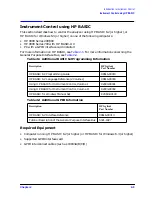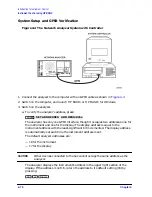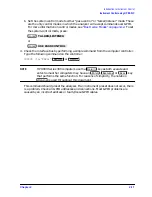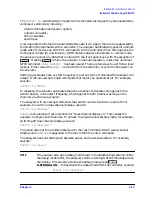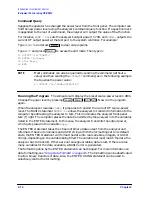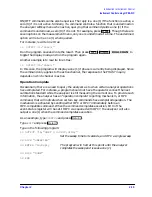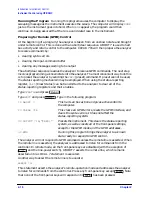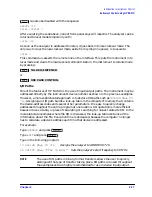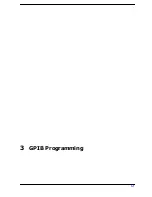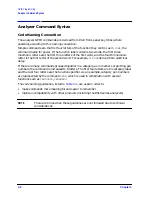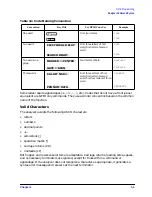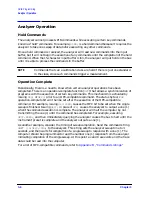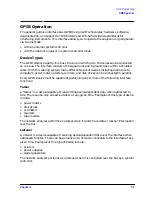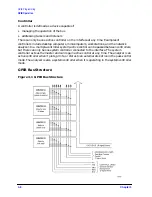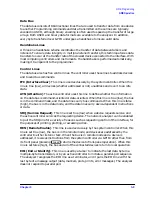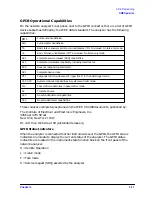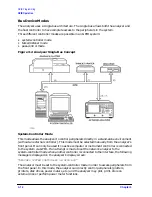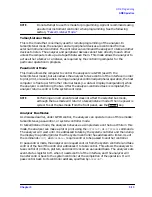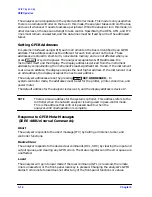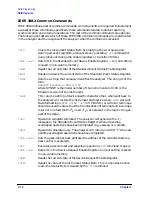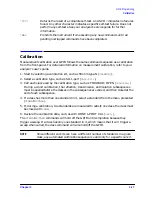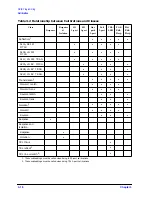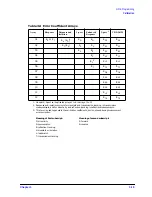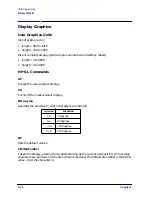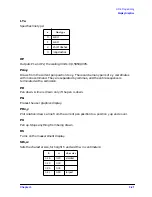
3-6
Chapter 3
GPIB Programming
Analyzer Operation
Analyzer Operation
Held Commands
The analyzer cannot process GPIB commands while executing certain key commands
known as “held” commands. For example,
SING;
is a held command because it requires the
analyzer to take one sweep of data before executing any other commands.
Once a held command is received, the analyzer will read new commands into the input
buffer, but it will not begin the execution of any commands until the completion of the held
command. When the 15-character input buffer is full, the analyzer will put hold on the bus
until it is able to process the commands in the buffer.
NOTE
Commands that call a calibration class are held if there is just one standard
in the class, since such commands trigger a measurement.
Operation Complete
Occasionally, there is a need to know when certain analyzer operations have been
completed. There is an operation-complete function (
OPC
) that allows a synchronization of
programs with the execution of certain key commands. This mechanism is activated by
issuing
OPC;
or
OPC?;
prior to an OPC-compatible command. The status byte or
ESR
operation-complete bit will then be set after the execution of the OPC-compatible
command. For example, issuing
OPC;SING;
causes the OPC bit to be set when the single
sweep is finished. Issuing
OPC?;
in place of
OPC;
causes the analyzer to output a one (1)
when the command execution is complete. The analyzer will halt the computer by not
transmitting the one (1) until the command has completed. For example, executing
OPC?;PRES;
, and then immediately querying the analyzer causes the bus to halt until the
instrument preset is complete and the analyzer outputs a one (1).
As another example, consider the timing of sweep completion. Send the command string
SWET 3 S;OPC?;SING;
to the analyzer. This string sets the analyzer sweep time to 3
seconds, and then waits for completion of a single sweep to respond with a one (1). The
computer should be programmed to read the number one (1) response from the analyzer
indicating completion of the single sweep. At this point a valid trace exists and the trace
data could be read into the computer.
For a list of OPC-compatible commands, refer to
Summary of Contents for 8719ES
Page 15: ...1 1 1 Alphabetical Command Reference ...
Page 293: ...2 1 2 Introduction to Instrument Control ...
Page 310: ...3 1 3 GPIB Programming ...
Page 334: ...4 1 4 Reading Analyzer Data ...
Page 343: ...5 1 5 Data Processing Chain ...
Page 350: ...6 1 6 Error Reporting ...
Page 364: ...7 1 7 Programming Examples ...
Page 502: ...A 1 A Preset Conditions ...
Page 517: ...B 1 B Command Listings ...

